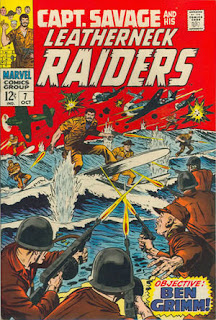After Dick Powell re-invented himself from musical-comedy guy to hard-boiled tough guy in 1944's Murder, My Sweet, he pretty much ran with that. He headlined several excellent RKO Film Noirs over the next few years. This is a good thing--because Powell surprised everyone by being really good at playing tough guys.
In 1951's Cry Danger, Powell is Rocky Mulloy, who did five years for robbery and murder before an ex-marine with one leg turned up to provide him with an alibi.
But getting out of jail doesn't bring Rocky's problems to an end. He really is innocent, but the ex-marine (who lied to provide a fake alibi) doesn't know this and figures Rocky knows where the loot from the robbery is hidden. Also, a police detective knows the alibi is faked, but doesn't know (or isn't sure) Rocky is innocent and figures that putting a tail on Rocky might turn something up.
And, on top of all that, Rocky's best friend is still in jail for the same crime. The friend's wife (played by drop-dead gorgeous Rhonda Fleming) is Rocky's ex-girl, complicating the emotions involved when he goes to see her. But Rocky is loyal to his friend. He knows who really pulled off the robbery--he just has to find the proof to get his friend out of jail. Eventually, that involves dodging both more attempts to frame him and one or two attempts to simply kill him.
 Powell is typically great in the role. Robert Parrish, a former Our Gang child actor, began his career as director with this film and does a fine job of infusing it with the proper atmosphere. The supporting cast is excellent, particularly Richard Erdman as the alcoholic ex-marine who provided the alibi and William Conrad as the bookie who originally framed Rocky for the robbery.
Powell is typically great in the role. Robert Parrish, a former Our Gang child actor, began his career as director with this film and does a fine job of infusing it with the proper atmosphere. The supporting cast is excellent, particularly Richard Erdman as the alcoholic ex-marine who provided the alibi and William Conrad as the bookie who originally framed Rocky for the robbery.As is the case with all good Film Noir, Cry Danger is stuffed full of great character moments. Erdman's interactions with a gorgeous blonde who infatuates him even after she repeatedly tries to steal his money are particularly priceless.
Cry Danger is yet another example of why the B-movies from the 1930s/40s/50s always have a hold on me. Regardless of the genre--Noir, science fiction, mystery, Western--they nearly always told their stories well. This film moves along in a crisp and logical manner--the rules of good storytelling are never sacrificed to the atmosphere and character interactions. Rather, the film's atmosphere and characters are made an integral part of a strong story.
So a former song-and-dance man and a former Our Gang kid join forces to give us a gritty tale of murder, treachery and deceit. Gee whiz, that sounds like the premise of a good Film Noir in of itself, doesn't it?























































